No, that doesn’t mean that it’s dirty.
I mentioned that I had two Magic Bucket of Variety finds this week, and this is the second, from a few days back. First I’ve seen in 21 years, since I was in Florida.
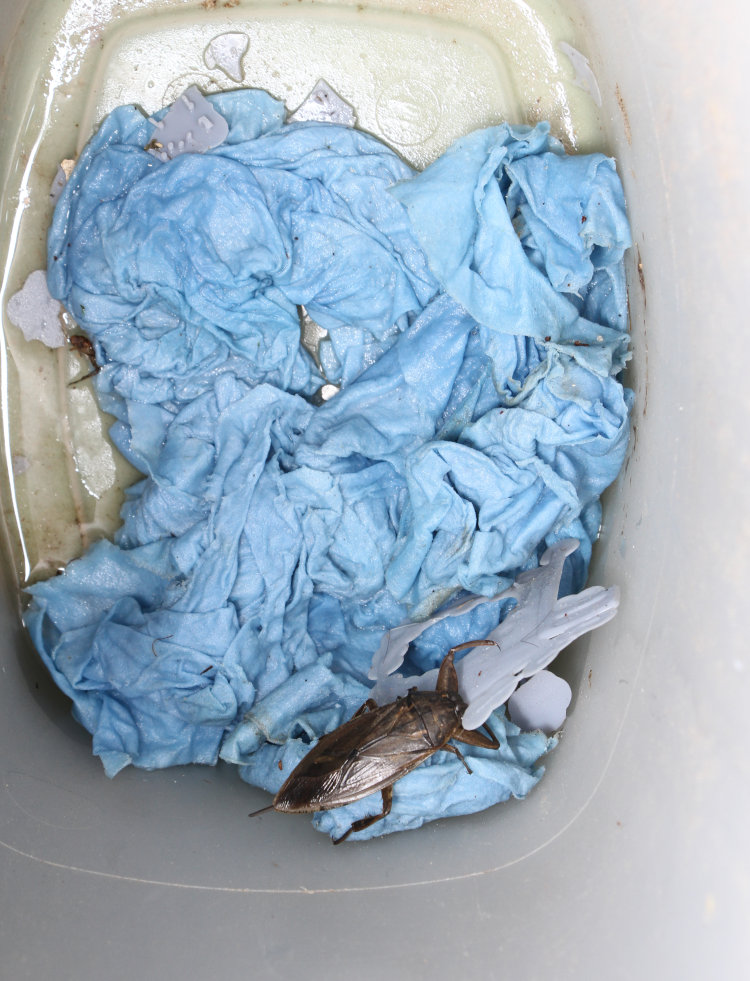
It took only a moment for me to recognize it, mostly because of those forelegs. We go in closer:
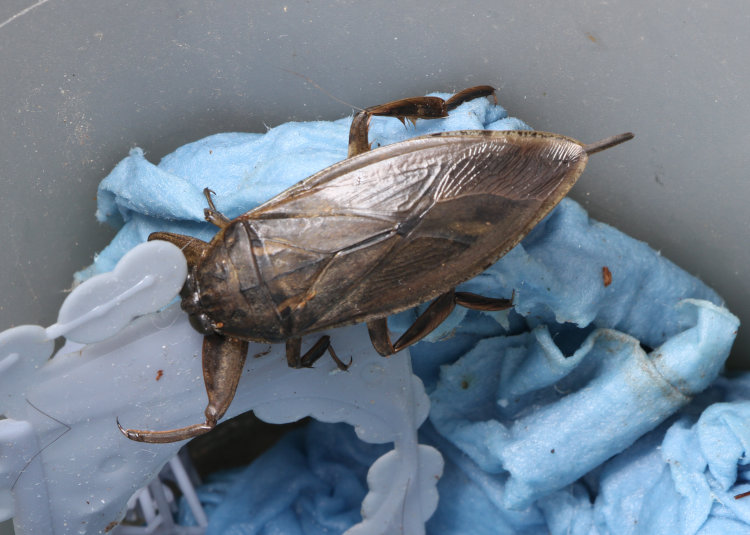
That is a giant water bug, and yes, that’s the common name, more brainiacally known as Lethocerus americanus – it’s sitting among the waste from resin printing. They’re a predatory semi-aquatic bug that spends a lot of time in the water and swims fairly well, and feeds on whatever they want, largely aquatic insects and minnows. They bear more than a passing resemblance to big cockroaches, in size and coloration, but that’s as far as the similarities go. As I said, those forelegs are a giveaway.
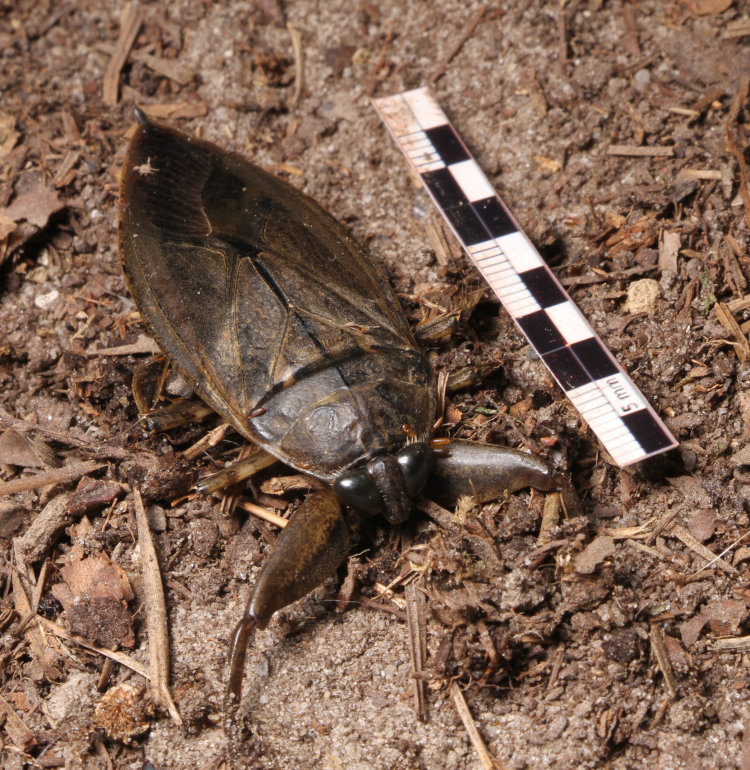
This is typical adult size, though they can get bigger – I measured this one at precisely 49mm, not counting their ability to fudge the body length, as we’ll see in more detail.
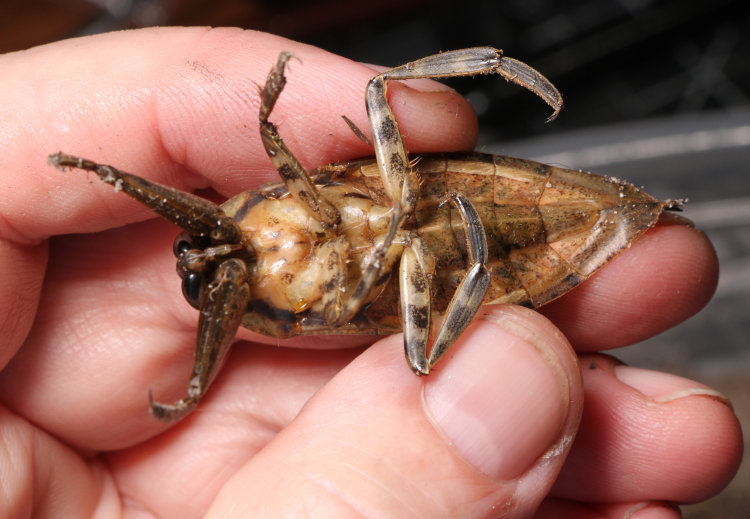
They’re curiously flat. with a raised ventral ridge under the abdomen, and can spend a decent amount of time above water; their efforts at running across the ground are definitely stilted and awkward, but they can fly quite well and are occasionally attracted to lights. Which might have been how this one was obtained; the outside door to Walkabout Studios has window panels at top, and some hours before my find I heard something large buzzing against the glass, so it might have dropped into the Magic Bucket and been unable to climb or fly out.
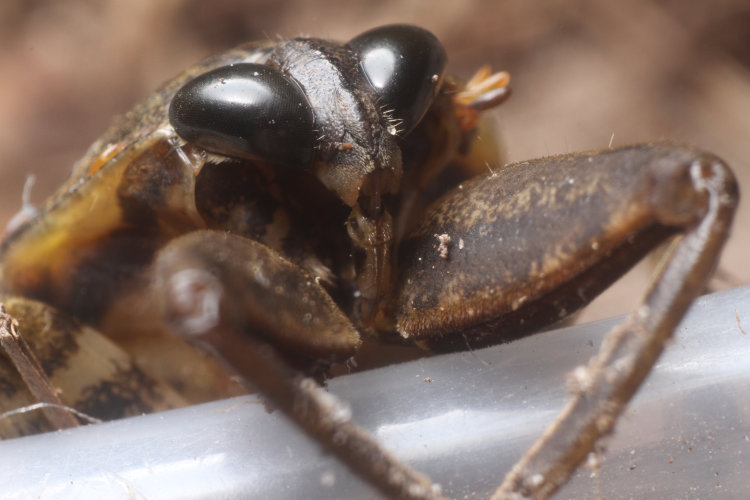
Colloquially, they’re occasionally called ‘Toe Biters,’ which is about as accurate as ‘hoop snake’ – they don’t bother people, though if handled improperly they could possibly deliver a sharp bite with that proboscis, which is used much like spiders do, to inject digestive fluid into their prey to liquefy the internal organs and suck them out.
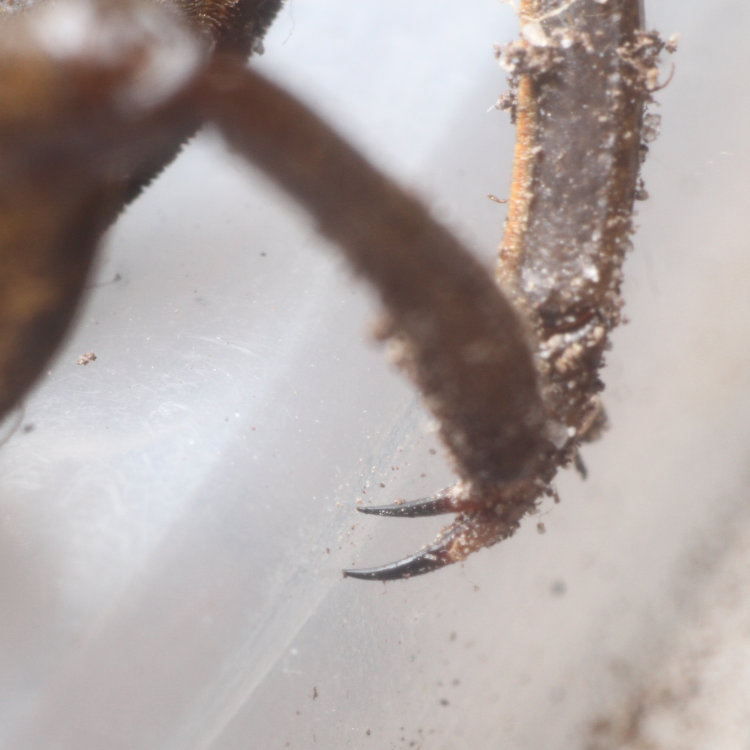
We get a peek at the grasping claws at the end of the legs, which I had to disentangle from the paper towels in the Bucket. Obviously, they can grip their prey quite well with these.
Once while wading in Florida at night, I felt something start climbing my leg from the water’s surface, and I reached down and swatted it away, hearing the burr of wings as it hit the surface while attempting to fly off – it was likely one of these.
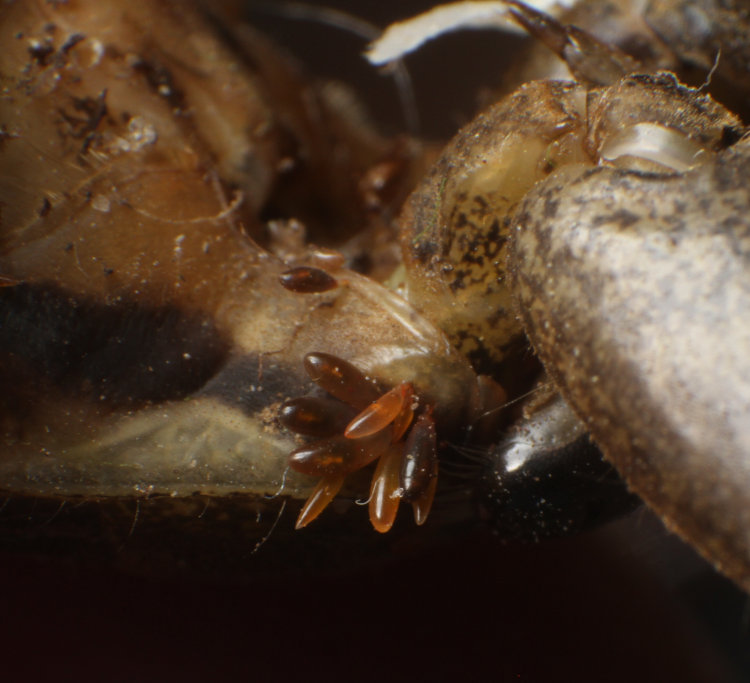
One of the other photos showed a glimpse of these, which I’m taking to be eggs of some parasitic insect attached to the exoskeleton of the water bug.
At this point I started to set up the macro aquarium for pics and video, which meant transferring the eggs within to another terrarium. The glass front that I added to the macro aquarium is necessary for sharper pics of underwater critters, since the usual plastic/polycarbonate is far from distortion-free and is always scratched.
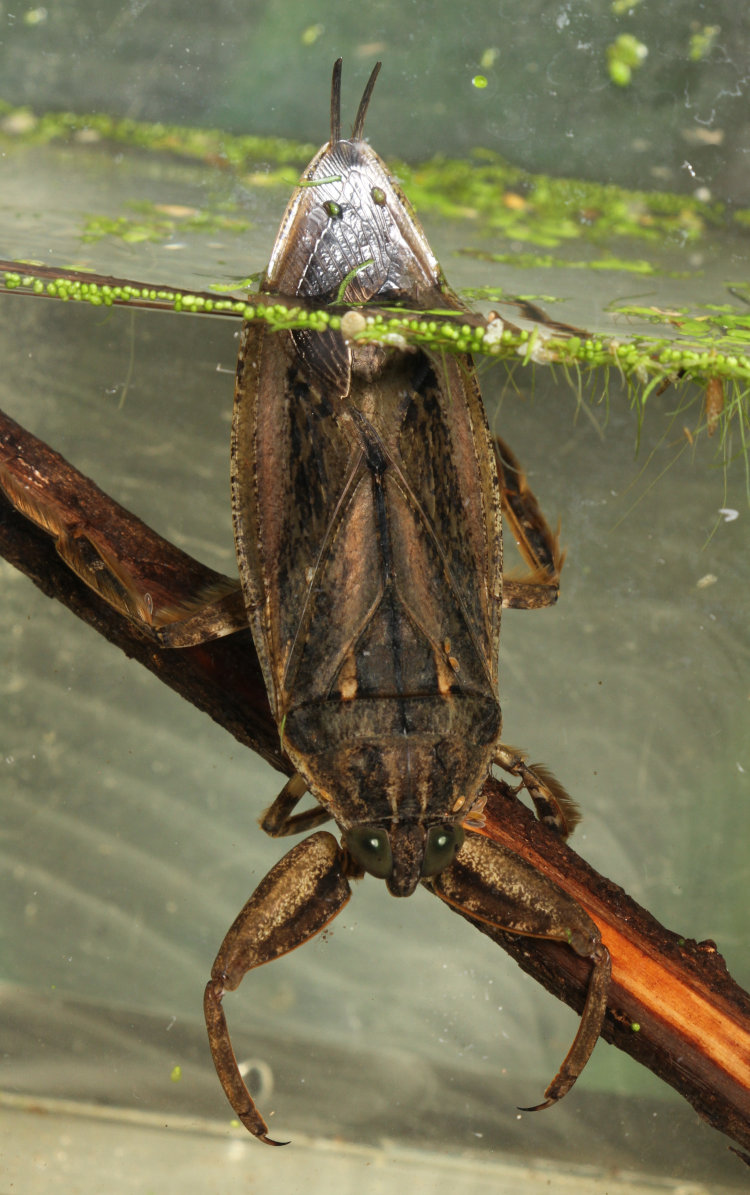
This is a typical hunting pose for the species, grasping a twig or water plant and hanging down with forelegs at the ready, while a breathing siphon at the tip of their abdomen gets extended above the surface, allowing them to remain indefinitely like this (since they don’t have gills.) They’re also quite buoyant, and have to swim downwards to remain submerged if they’re not actively holding onto something.

We get a closer look at the eyes here, and how they differ from most other arthropods. Usually, the top surfaces of the ommatidia, the individual eyes in the compound collection, have curved surfaces like corneas over each, but here they’re smoothed out, likely to cut water resistance when swimming. Or maybe the giant water bugs just think it looks cooler.
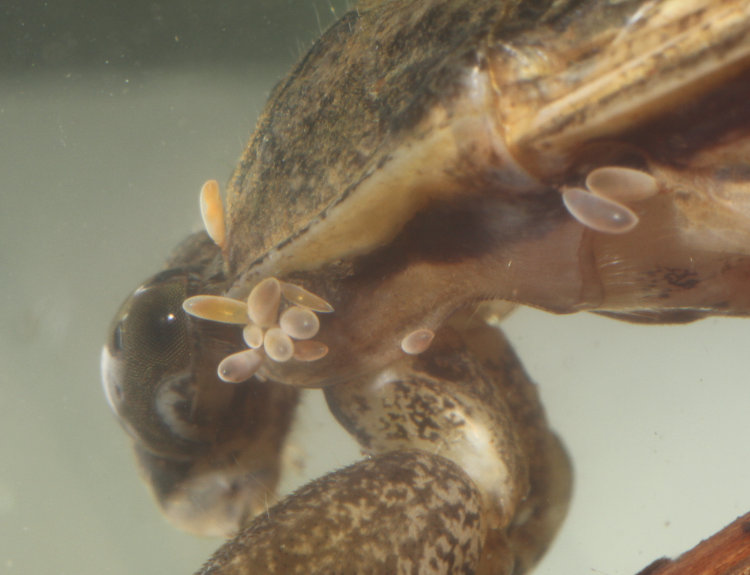
Another view of those parasitic eggs, taking on a different light quality when under water.
So after the initial photo sessions, I wanted to see if I could get video of it feeding, and went out the next morning and snagged a bunch of minnows from the pond (as well as a ridiculous amount of debris, since no point of the water’s surface is actually clear.) Most of what I captured was tiny, less than 10mm in length, but I did snag one at least 30mm, a good meal for the water bug. And so I introduced these into the macro aquarium after setting up the video rig.
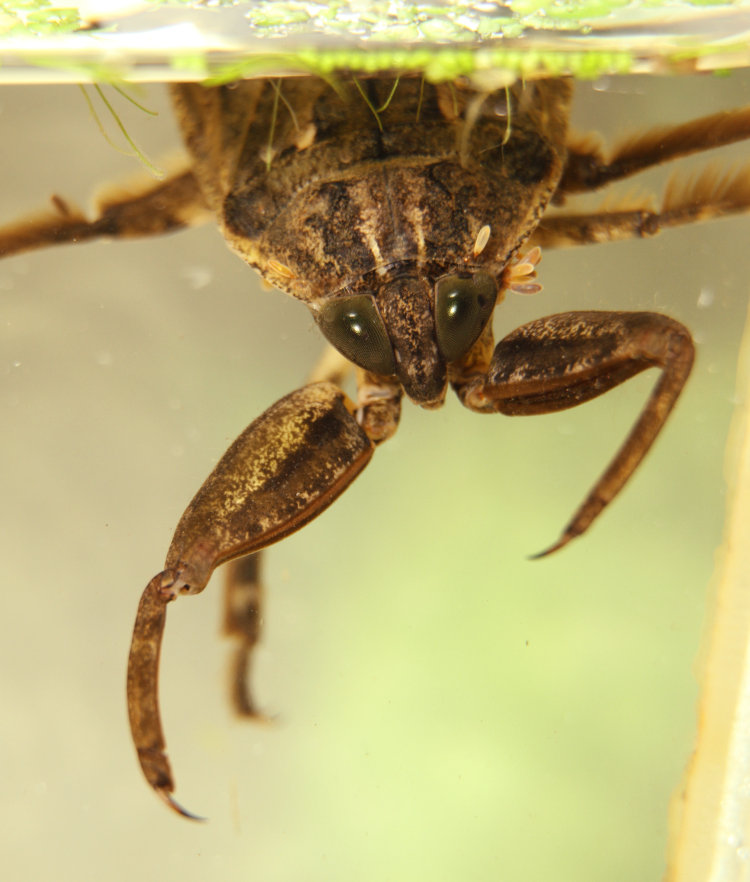
The water bug adopted a great ready pose after a few nudges, close enough to the glass to reduce distortion and allow good lighting, and then I waited for one of the minnows to swim within range. Every time it got close, I started the video and watched for the action.
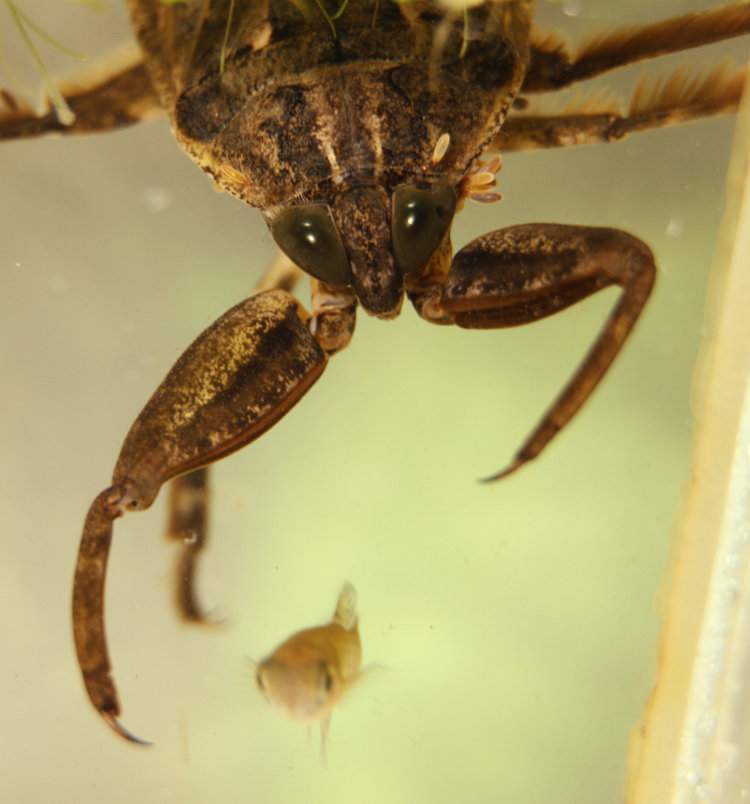
Which solely consisted of the minnows swimming blithely past the resolutely immobile water bug, who apparently didn’t feel like feeding – the bright video lights may have had something to do with this. Even as the larger minnow practically cuddled up alongside the water bug, unaware of the potential danger, the water bug irritably shifted position and even swam off disturbed. After half an hour of this, I moved the macro aquarium into a larger terrarium (because, like I said, water bugs can fly) and left them in the dark. When I checked back a few hours later, the minnows were untouched and the water bug had left the water and was doing short flights in the terrarium, so I let them all go. Can’t say I didn’t try, though.



















































